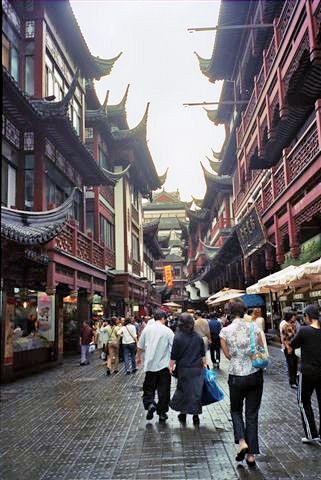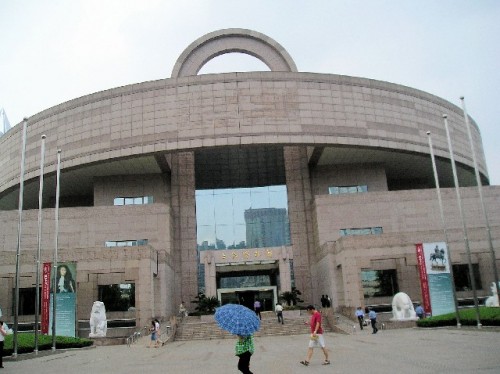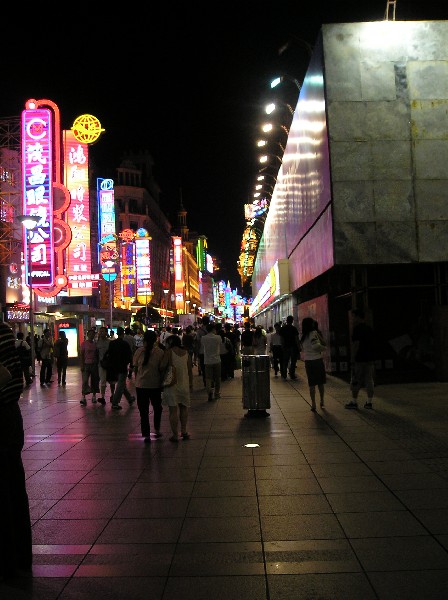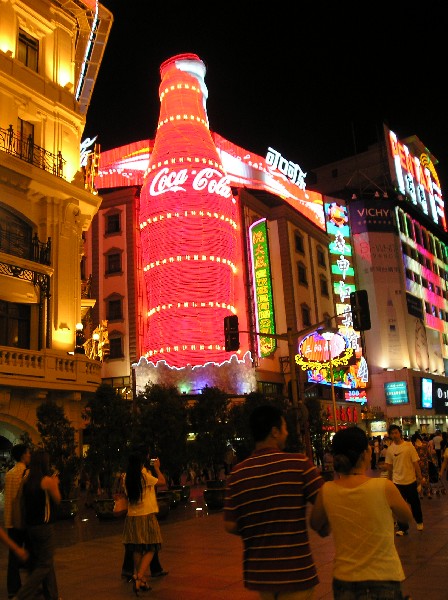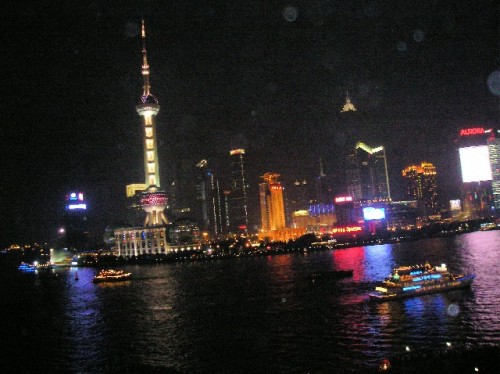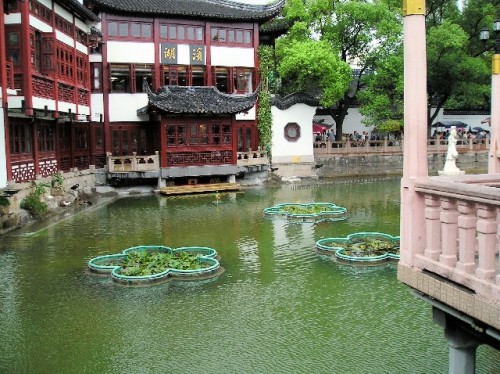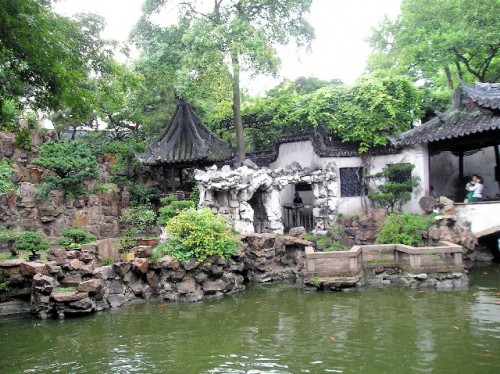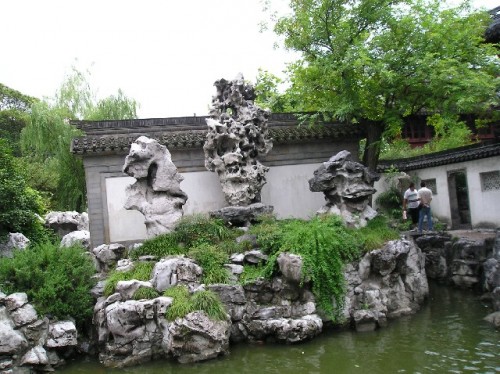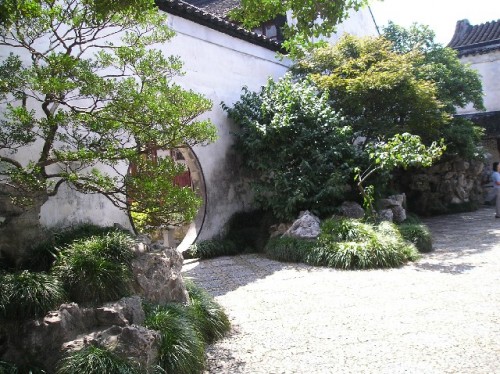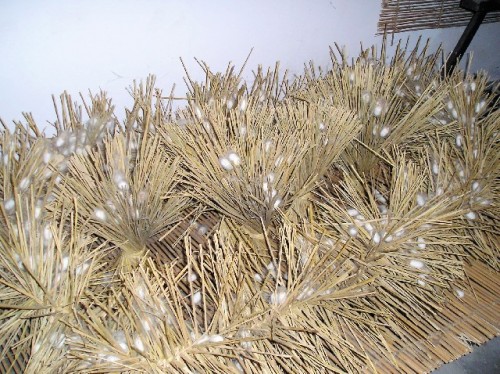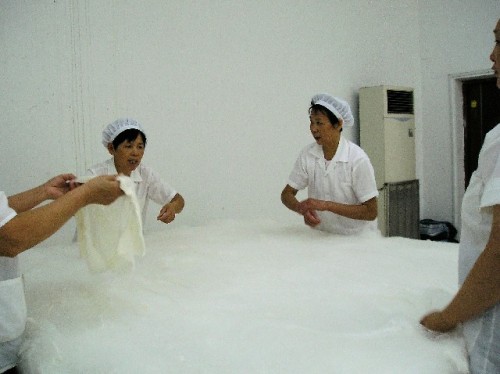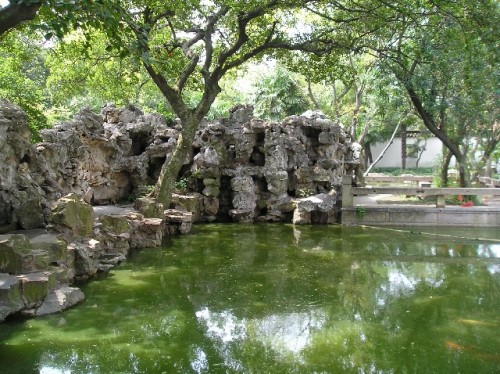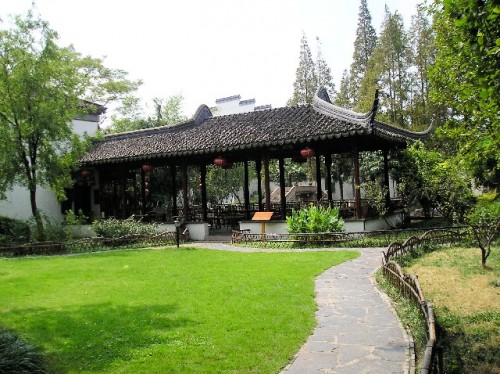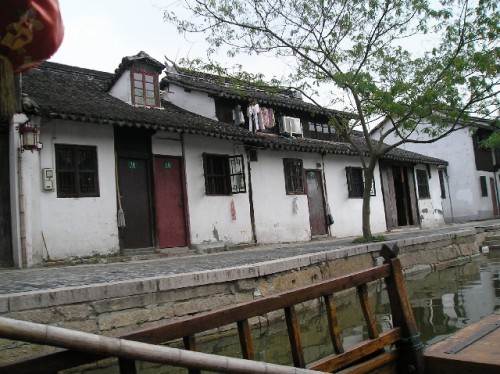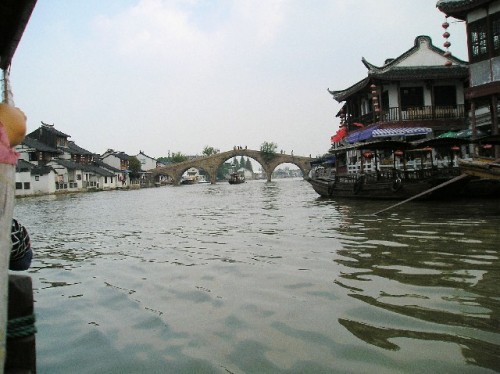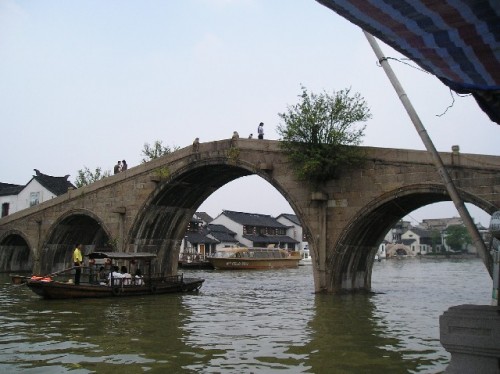Report on China: Part One
Shanghai and Suzou
By: Zeren Earls - Jun 25, 2008
On a beautiful September morning I flew out of Boston for Shanghai via Detroit and Tokyo. I often worry about my checked luggage when I have several connecting flights. The efficiency at Tokyo's Narita airport as I cleared security and was ushered to the final leg of my Northwest flight set me at ease. Once airborne the Japanese flight attendants, all looking alike down to the parting of their hair like a classical ballet corps, passed out three forms required for China: entry and customs forms and a health card to detect passengers to be quarantined.
Going through immigration, I noticed a gadget that I took for a camera, which turned out to be a thermometer. It checked my temperature by the way it was aimed at my forehead. Relieved that the 24-hour journey had had no impact on my body heat, I walked out through the gates of this very modern airport into the mass of people waiting to meet passengers. I spotted my name amidst the sea of signs. A petite woman named Asa introduced herself as the guide, assisting with arrivals for the night. She informed me that the three others in my pre-trip group, all from California, had already arrived.
Shanghai
Padong International Airport, 140 km from the city center, is located on the eastern side of the Huangpu River and connects by a bridge to the old section of Shanghai. What used to be the vacant eastern side is now the new financial center. Steel and glass skyscrapers glittered in the night sky as we moved through the dense traffic. Although it was almost midnight and I had not slept for a very long time, I felt wide-awake caught up in the rhythm of the city. Shanghai, a city of 20 million people, never shuts down and is home to 24 Pizza Huts and 30 Starbucks as well as many KFC and MacDonald's outlets, all popular. Each month to help ease traffic the municipal government auctions off a limited number of license plates, which are snapped up by the wealthy and by foreign companies.
As the van approached the hotel on Nanjing Road, the flamboyant skyscrapers glowed in lights, including one that looked like a pineapple. The vertical city seemed to pulsate with stacked up signs and large video screens advertising everything from cosmetics to Pampers. Green Sprite bottles lit from within lined both sides of the street. A gigantic Coke bottle donned in red created a street corner landmark. There was no doubt that in Shanghai communism and capitalism thrived side by side.
Our small group of four met in the hotel lobby the next morning. We all appeared unaffected by jet lag and were eager to start our adventure, although my body knew it was 9 p.m. back home instead of 9 a.m. the next day. Our guide taught us our first Chinese words, "Ni hao" meaning "hello". We started at the Bund, the boulevard along the river lined with Art Deco villas, banks and office buildings reflecting the European influence of long ago. The haze hanging over the city concealed a clear view of the new east, although we could detect the skyline pushing itself higher.
Visiting the Yu Gardens built in 1557, introduced us to the ancient Chinese design of Feng Shui. The opposing forces of yin and yang are aligned in such a way that soft and hard balance one another. Plants pair up with architecture, and water with rocks. Hard cobblestones complement wood structures. Generations of families watch over rock formations as they are shaped by nature and earn a living as "rock farmers". Others sell crafts, food, and souvenirs to tourists, including locals, by leasing space in buildings owned by the government. We walked around teahouses, pavilions and goldfish ponds, and were bemused by the opportunity to buy cheap imitation Rolex watches.
The treat of the day was visiting a community center serving 90,000 workers that live in nearby apartments. After a briefing by the executive director, we went for lunch to one of the homes. The owner worked at a car manufacturing plant; he was not home. His wife, a sales assistant at a department store cooked for us on her day off. She worked twelve hours for three and a half days a week. In China shops are open seven days a week, year round. The family lived in a two-bedroom unit with their fourteen-year-old daughter.
Chinese dishes are served on a lazy Susan, starting with cold dishes, mostly pickled, and continuing with warm ones accompanied by rice. Soup comes before dessert, which is often fruit. The menu consisted of dishes similar to what the family would eat on a festival day: quail eggs, roasted peanuts with seaweed, pork wrapped in thin slices of eggplant battered and fried, tomatoes with Mandarin oranges, pork dumplings, tofu with pork, baby bok choy, mushrooms, chicken with celery, shrimp, winter melon dipped in orange juice, pumpkin cake and grapes. If it sounds like a feast, it was.
My new digital camera got a workout on its first day and had to have its batteries charged that evening. As luck would have it, as soon as I plugged in the AC/DC adapter I had with me, it blew a fuse, leaving me in pitch-dark. Fortunately, I had packed a flashlight. I managed to locate it and called the reception desk for assistance. Right away I had the floor attendant at the door. I must not have been the first hotel guest to blow a fuse, as he did not even look surprised. Within ten minutes my lights were back on. To avoid future disasters, I resigned myself to using AA batteries, the price of which kept changing with each city or even store. Bargaining for batteries was a new challenge.
The typhoon that hit the South China Sea brought gusty winds and heavy rain to Shanghai on our second day. Slightly modifying our itinerary, we spent the morning in the new museum, a four-story, state-of-the-art structure. The top story is dedicated to arts and crafts of China's ethnic minorities. Other galleries feature ancient Chinese jade, bronze, ceramics, seals, calligraphy, painting, sculpture and furniture. These rare objects created by the masters of each dynasty are phenomenal collections, the best I have seen anywhere. Each floor has a small shop featuring goods inspired by the adjacent galleries. Contemporary designers have drawn much inspiration from China's rich history as was reflected in the main museum shop on the first floor. Having spent the first of our two hours on the fourth floor, I returned to the museum in the afternoon during my free time.
Lunch was a Mongolian barbecue, a buffet of raw meats and vegetables accompanied by a variety of pungent sauces, which we piled on our plates and carried to the cooking station. Stir-fried for us while we waited, this meal was a novelty rather than a culinary experience. Based on the recommendation of two travel-mates who had enjoyed a foot massage the night before, I decided to have one too. Getting to the health club known for this required a stroll down the pedestrian section of Nanjing Road, by now in its evening glory. Computerized light patterns rushed up, down and sideways on building facades. Chic shops glittered with stylish window displays featuring Caucasian mannequins. The pedestrian density was at its peak as people enjoyed a shopping spree after work.
The foot massage turned out to be much more than what its name suggests. A young man exhausted himself by kneading, slapping, pulling, pushing and working all my limbs, back and head for an hour. Because of the low cost of the massage at only $12, I wanted to give him a tip, which he declined. Tipping is not a custom in China at places for locals.
The next day, the 40-minute train ride to Suzhou gave us our first glimpse of the countryside. The two-story train passed by rows of young trees to be later transplanted to city parks, rice paddies, ponds for farming shrimp and freshwater crabs, workers' apartments and many shacks. As we approached Suzhou, the number of run-down buildings with laundry stretched across bamboo poles and of high-rise buildings increased. Suzhou is a 2500-year-old city with a population of 600 000 people, a small town by Chinese standards. Until 1949, because of its gentle climate rich people lived here and built elegant gardens and homes. Many were destroyed during the Cultural Revolution; a select number have been restored and are well maintained now.
Declared a World Heritage Site by UNESCO in 1997, the Master of Nets Garden is one of these. Laid out 800 years ago, its center is a pond surrounded by roofed walkways and pavilions. Trees, plants and rockery complement the architecture and the pond based on classical design principle. As we walked around the living quarters, we admired the moon gates and round windows that framed the outdoors making peonies, bamboo plants and rocks appear as if they were finely executed landscape paintings.
Suzhou is also a city of waterways connecting it to China's Grand Canal, which runs from north to south to the Yangtze River. A short cruise navigated us to the old section of town, where houses perched on stone foundations in the water and weeping willows lined the narrow canals. We also walked around the quaint streets on land.
The most fascinating part of the day for me was the visit to the silk mill. As a child growing up in Turkey, I raised silkworms in a shoebox and fed them fresh leaves daily from the mulberry tree in our garden. However, I had never seen the process of obtaining silk from a cocoon. The harvesting time of the mulberry leaves determines the quality of the silk. Spring leaves yield the strongest and longest threads. We observed the life cycle of the silkworm from egg to cocoon, at which time they are baked so as not to allow the moths to cut their way out and damage the silk filaments. Then boiling the cocoon softens the threads, which are wrapped around spools, dyed and woven into cloth. The mill shop offered a wide array of products ranging from quilts to clothes.
On our final night we went to the trendy Bar Rouge for a drink and to have a bird's-eye view of the city from the rooftop of 18 Bund. The lighting of all the buildings enhanced their architectural detail and played up the uniqueness of each high-rise spire as if they were competing for first prize. Square Chinese characters on advertisements and lit riverboats added a pictorial quality to the nightscape. The light spectacle before us celebrated Shanghai, whose people enjoyed making money and spending it with abandon.
Bumper-to-bumper traffic the next morning brought us to Zhujia Village, a historic town known for its rice production, southwest of downtown Shanghai. Here we enjoyed another beautiful garden. Built in the 19th century, Ke Zhi Garden reflected European influence. Continuing on to the rice culture exhibition hall, we saw instruments for flooding fields, harvesting and storage. The water buffalo's importance to this culture was evident from the displays. Another boat ride took us to the old town market to browse the ancient streets and traditional shops.
Among my memorable images of Shanghai is the number of cranes in the skyline. The current construction boom is in line with the government's strategy to make the city the country's financial center, surpassing Hong Kong by 2012. Entering China through this vibrant city seemed similar to arriving in the United States via New York. You may not choose to live there, but it is an exciting place to visit. After this grand introduction to the country, we flew to Beijing on Shanghai Airlines to start the main portion of the trip.

